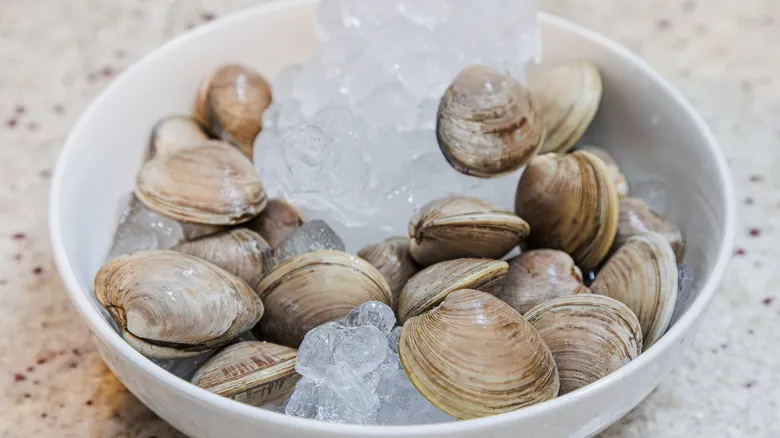Soak clams in salt water
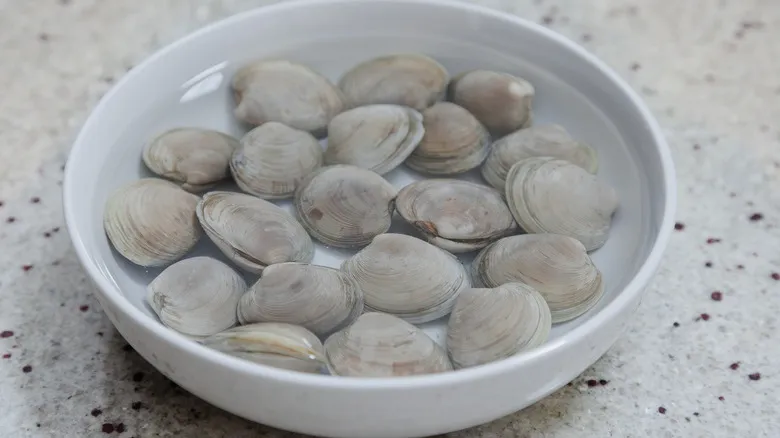
Fill a sizable bowl with cold water and mix in ? cup of salt for every quart of water.
Ksenia Prints/Chowhound
Place the clams in this saltwater mixture for 30 minutes to an hour. This method helps the clams, being living organisms, to release any sand trapped within their shells.
Ksenia Prints/Chowhound
Rinse under running water
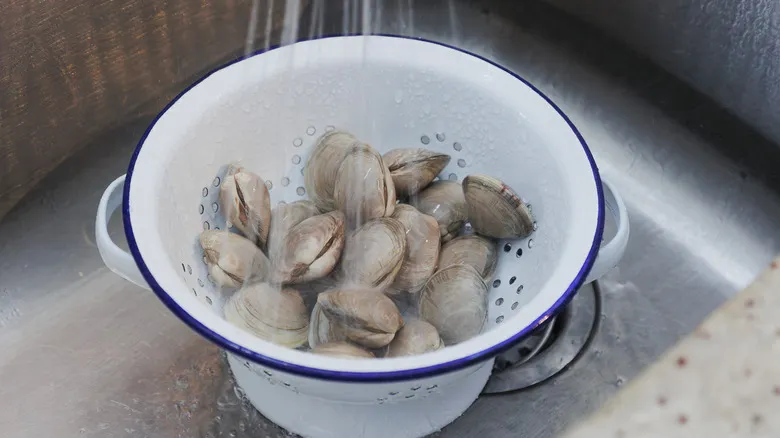
Once soaked, pour the clams into a colander and rinse them well under cold running water. This process removes the salt and helps eliminate any loose sand from the shells' surface.
Scrub the shells
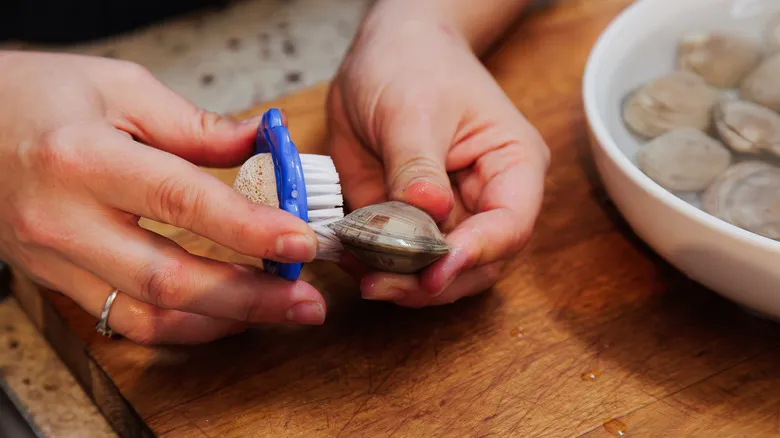
With a firm brush or a fresh scouring pad, carefully scrub the surface of each clam's shell to eliminate any persistent dirt or residue. Focus particularly on the crevices and ridges, as stubborn particles can become trapped in these areas.
Soak in water with cornmeal
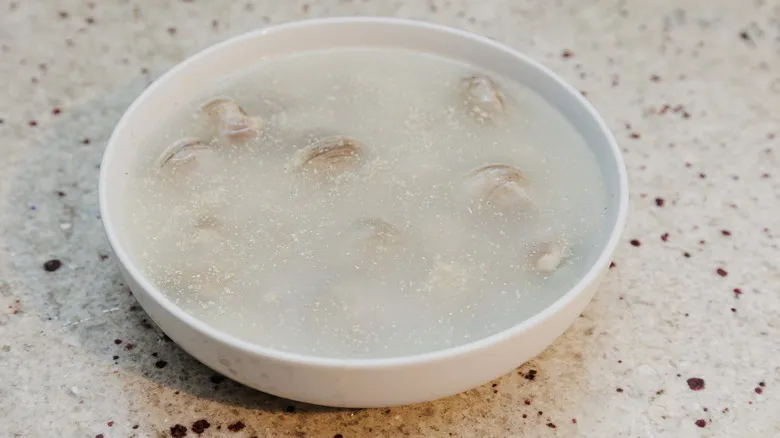
Smaller clams are generally simpler to clean, whereas larger clams tend to contain more grit, making the cleaning process longer. If your clams are especially sandy, combine approximately ? cup of cornmeal with a quart of water in a large bowl. The cornmeal will attract sand particles, assisting in dislodging any stubborn grains from their hiding spots.
Ksenia Prints/Chowhound
Let the clams soak in this mixture for 2-3 hours.
Ksenia Prints/Chowhound
Rinse the clams again
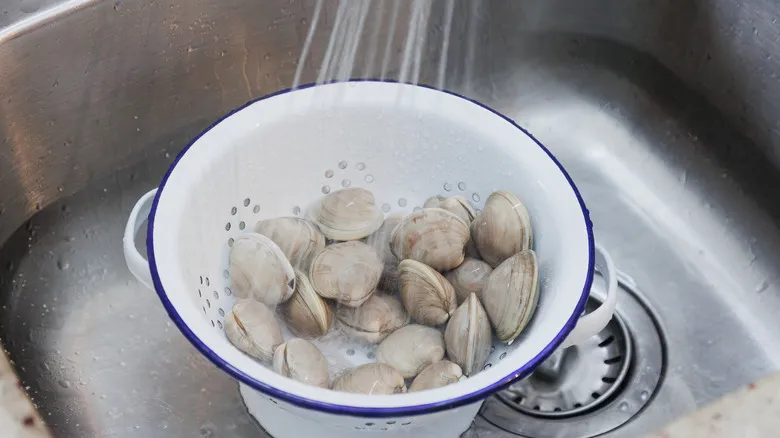
Following the cornmeal soak, drain the clams and rinse them again under cold running water to eliminate any leftover cornmeal and expelled sand.
Steam the clams briefly
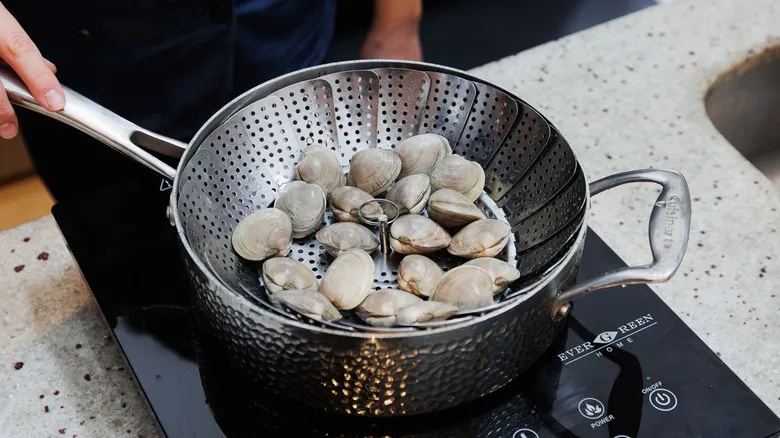
For very dirty clams, we have to bring out the heavy artillery. Start by filling a pot with a little water and place a steaming basket or rack inside.
Ksenia Prints/Chowhound
Next, add the clams to the steamer and steam them for approximately 2 minutes. Drain and rinse the clams, throwing away the dirty water. This brief steaming process helps to slightly open the shells, allowing more grit to be released.
Ksenia Prints/Chowhound
Inspect for grit
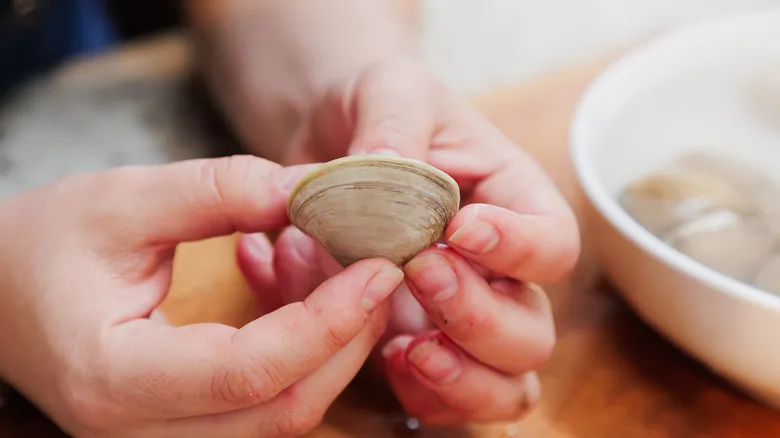
Once you've finished cleaning, inspect each clam one by one. Check for any leftover sand or debris on the shell or near the opening. If you notice any, give those clams an additional rinse or scrub.
Tap your freshly cleaned clams
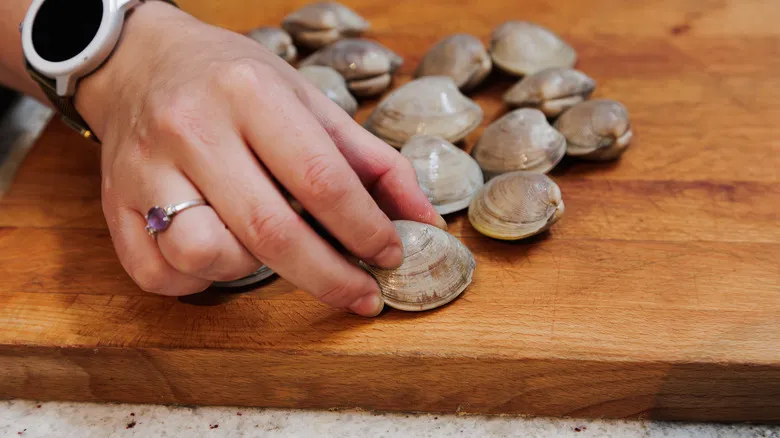
Tapping clams is an essential process for assessing their freshness and safety for eating. As previously noted, uncooked clams should still be alive. By tapping the outer shell of a clam, you can confirm that only live and safe specimens are included in your meals.
When you tap a live clam against a hard surface, it will respond by tightly closing its shell. This reaction serves as a natural defense mechanism, signaling that the clam is alive and in good condition. Conversely, if an uncooked clam remains open after being tapped, it is likely dead and should be discarded right away. Dead clams can contain harmful bacteria and toxins that can multiply quickly, posing serious health risks if ingested. Since clams can perish between the time of purchase and cooking if not stored properly (for instance, in an airtight container that restricts airflow), it’s important to perform this test just before cooking.
What to cook with clams
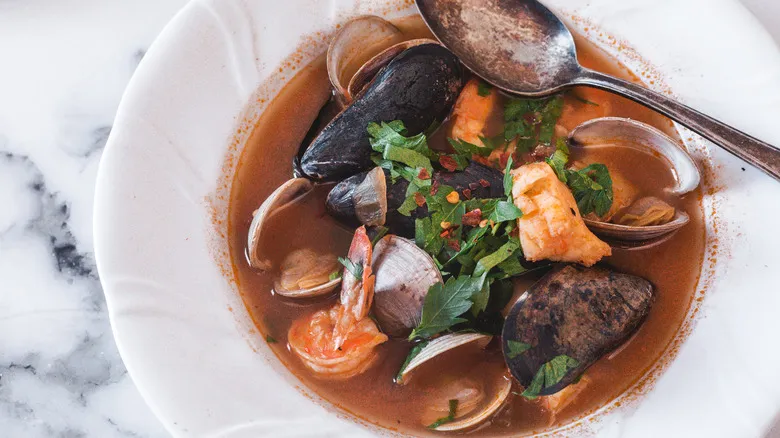
Now that your clams are thoroughly washed, scrubbed, and pristine, they’re all set for their culinary debut in your kitchen. The great news is that there are numerous delectable clam-based dishes you can prepare!
One of the most iconic clam dishes in North America is undoubtedly creamy clam chowder. This beloved New England classic has a devoted following nationwide, with many eager to defend their favorite recipe. If you prefer a less contentious soup, consider American Italian cioppino, which was popularized by weary fishermen looking to make the most of their daily catch.
If the weather is too warm for soup, why not toss those clams on the grill for a summer cookout? Alternatively, if you’re a pasta lover, try the classic linguine and clams, perhaps paired with clams casino for the perfect blend of high and low dining.
Whether you choose to fry, steam, grill, or pan-sear clams, the options for preparing this delicious seafood are endless!
Recommended
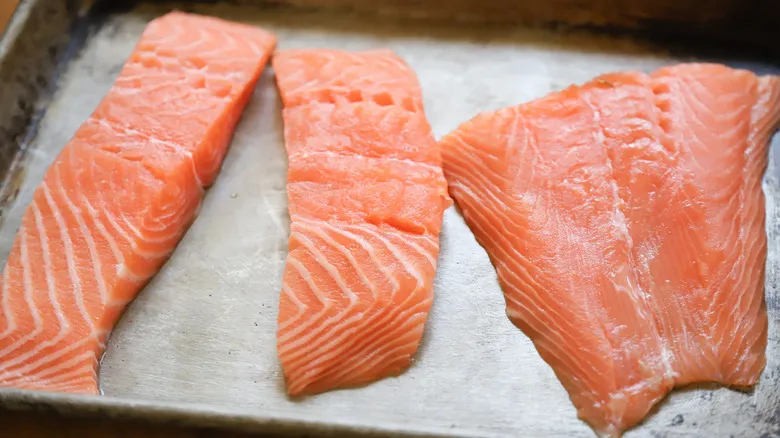
How To Flawlessly Bake Salmon And Reheat The Leftovers
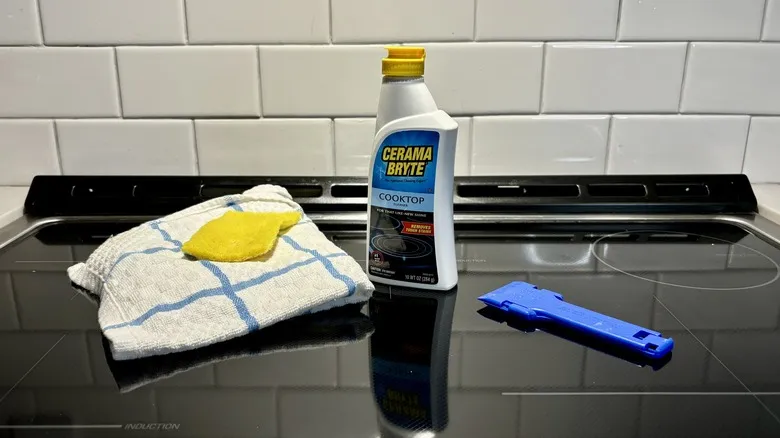
How To Clean A Glass Stove Top (Without Leaving A Single Scratch)
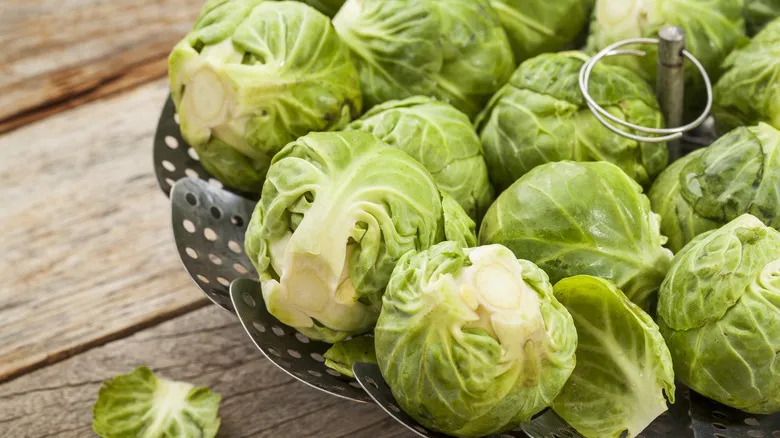
You Don't Need A Dedicated Steamer Pot. Here's What To Use Instead
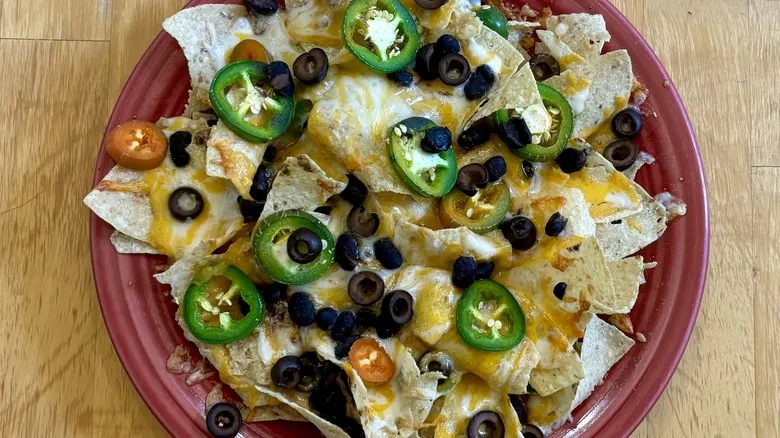
How To Make Fool-Proof Nachos For Any Game Day
Next up

